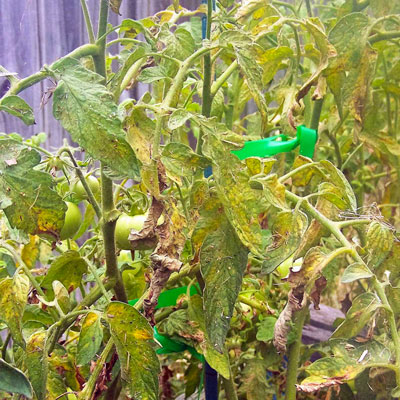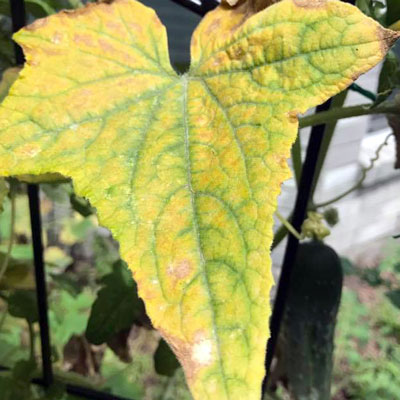Spider Mites Are Comin’ to Town
No pest that we have attacks any more species of plants. From marigolds, pansies, verbenas and violets to beans, cucumbers, squash, and tomatoes, they’re all over our gardens. They’ll load up on junipers, arborvitae and cypress. And they even move onto our houseplants as well. And the bad news is that you have a hard time seeing them because they’re almost microscopic.
Their symptoms, however, are extremely recognizable. They start with fine stippling, or as I call it, tiny tan mottling. Spots that are the size of pin pricks and the color of a manila folder. You’ll see them on the tops of affected leaves. The damage, however, starts at the bottoms of the plants and moves its way upward.
Next you’ll see more spots. And more and more, and many more. Then the leaves will begin to turn browned and crisp, then almost white. Eventually, when it’s way too late to do anything about them, you’ll see very fine webbing between the leaf petioles (the “stems” that hold the leaf blades onto the stems) and the plant’s stems.
Spider mites aren’t really insects. Where insects have six legs, spider mites (like ticks and spiders) have eight. But they get lumped in with insects in terms of controls.

Early identification…
When you suspect a spider mite outbreak, take a leaf that appears to be infested and thump it over a sheet of white paper. Watch closely for very tiny, paprika-colored specks to start moving about. They are so small that you would have a difficult time seeing them on the plant, which explains looking for them on the paper. You could easily put 20 of them abreast on the head of the pin.


Controls…
Horticultural oil sprays may help limit the population of spider mites, as will spraying with a hard stream of water.
However, the best control will probably come from applications of labeled insecticides. We no longer have specific mite control products such as kelthane, so you’ll need to check labels on general-purpose products and follow their directions carefully. Check the plants again in a day or two to see if the numbers of active mites has decreased significantly. Repeat weekly until you are satisfied with the results.

